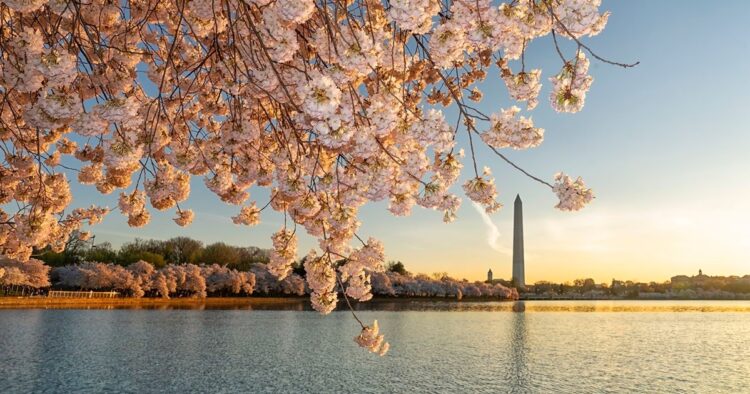Over the weekend, the National Park Service (NPS) shared exciting news: the cherry blossoms along Washington, DC’s iconic National Mall have reached “peak bloom.” This stunning display of nature’s beauty follows a particularly warm winter, with the blossoms bursting open earlier than usual. The NPS took to social media, enthusiastically declaring the arrival of peak bloom and inviting visitors to witness this magnificent spring spectacle in person.
For those unfamiliar with the term, “peak bloom” refers to the point at which approximately 70% of the Yoshino Cherry trees along the National Mall and the Tidal Basin have blossomed. This enchanting phase typically lasts for several days, offering visitors ample opportunity to admire the delicate pink and white blooms. However, the exact timing of peak bloom can vary depending on weather conditions.
Remarkably, this year’s peak bloom marks the second-earliest on record for the cherry trees in Washington, DC. This extraordinary phenomenon can be attributed to one of the warmest winters recorded in the nation’s capital. Back in 1990, the cherry trees reached peak bloom on March 15, making this year’s early bloom a notable event in the city’s natural history.
Climate experts have observed a significant warming trend in Washington, DC, particularly during the winter season. According to data from Climate Central, the average seasonal temperature in the capital has increased by 3.6 degrees since 1970. This warming trend has resulted in an additional 13 warm, above-average days during the typically cold winter months.
The warming trend isn’t confined to winter; it extends into spring as well. Over the past few decades, spring in Washington, DC, has become approximately 2 degrees warmer, contributing to 10 more warm, above-average days during the season. As a result, the onset of spring arrives earlier, triggering cherry blossoms to bloom sooner than in previous years.
Despite the joyous occasion of peak bloom, there’s a somber note ahead for the cherished cherry trees in the capital. Following the conclusion of the National Cherry Blossom Festival on April 14, the NPS has plans to remove nearly 160 cherry trees as part of a critical project to repair deteriorating seawalls in the city. This ambitious three-year endeavor, with a budget of $113 million, is scheduled to commence in late spring and early summer, focusing on areas around the Tidal Basin and along the Potomac River through West Potomac Park.
As visitors flock to the National Mall to witness the breathtaking cherry blossoms in full bloom, there’s a poignant reminder of the ever-changing landscape of Washington, DC, influenced by both natural and man-made forces. Despite the impending changes, the timeless beauty of the cherry blossoms continues to captivate and inspire all who behold them, serving as a symbol of renewal and the enduring spirit of spring.

















Comments